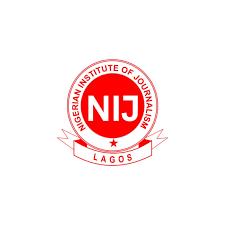Government Keypoints: Public Corporations and Parastatals; This study material is suitable for students sitting for the following exams: JAMB, WAEC, NECO, GCE, IJMB, and JUPEB. Public corporations and parastatals constitute vital components of a country’s public sector, established by the government to fulfill specific functions, provide services, or regulate industries.
Study more government keypoints here
Understanding their diverse types, functions, financial structures, regulatory mechanisms, and policy transitions such as deregulation, privatization, and commercialization is essential in comprehending their role in the economy and society.
a. Definition, Types, Purposes, and Functions:
- Definition: Public corporations and parastatals are government-owned entities designed to execute specific functions or services independently from government departments.
- Types: Examples include utility companies (electricity, water), transportation entities (railways, airlines), and regulatory bodies (financial regulatory authorities).
- Purposes and Functions:
- Service Provision: Offering essential services like water supply, electricity, or transportation.
- Regulatory Oversight: Enforcing regulations and standards in various sectors.
- Developmental Projects: Executing projects for economic development (housing corporations, infrastructure development).
- Revenue Generation: Generating income for the government through commercial ventures (oil corporations).
- Policy Implementation: Implementing government policies in specific sectors (education, health).
b. Finance, Government Controls, and Problems:
- Finance:
- Budgetary Allocations
- Loans and Grants
- Revenue Generation
- Subsidies
- External Funding
- Government Controls:
- Board Appointments
- Regulatory Oversight
- Budgetary Controls
- Policy Directives
- Audit and Compliance Checks
- Problems:
- Financial Mismanagement
- Bureaucratic Red Tape
- Inadequate Funding
- Political Interference
- Lack of Autonomy
c. Deregulation, Privatization, Commercialization:
- Objectives:
- Encouraging Competition
- Enhancing Efficiency
- Attracting Investments
- Reducing Government Control
- Stimulating Innovation
- Features:
- Removal of Entry Barriers
- Transfer of Ownership (Privatization)
- Business-Oriented Operations (Commercialization)
- Autonomy and Flexibility
- Increased Market Competition
- Merits and Demerits:
- Merits: Efficiency Improvement, Investment Inflows, Innovation
- Demerits: Job Losses, Reduced Government Control, Social Inequality
d. Comparison between Public Corporations and Parastatals:
Public corporations often focus on commercial services with profit motives (e.g., Nigerian National Petroleum Corporation), whereas parastatals are typically regulatory or service-oriented bodies (e.g., National Electricity Regulatory Commission). They differ in objectives, functions, funding sources, and operational structures.
i. Examination of the Operations of Public Corporations and Parastatals:
Operational functions include service provision, regulatory oversight, infrastructure development, revenue generation, and policy implementation, tailored to their specific sector and mandate.
ii. Identification of the Processes Involved in Privatization and Commercialization:
Privatization involves divesting government ownership through methods like public offerings or asset sales. Commercialization includes restructuring entities to operate more business-like, encompassing changes in management, service delivery, and revenue models.
iii. Assessment of the Economic Importance of Privatization and Commercialization:
Privatization and commercialization can foster efficiency, attract investments, and stimulate economic growth. However, their impact necessitates a thorough evaluation to ensure equitable outcomes and address potential social implications.












